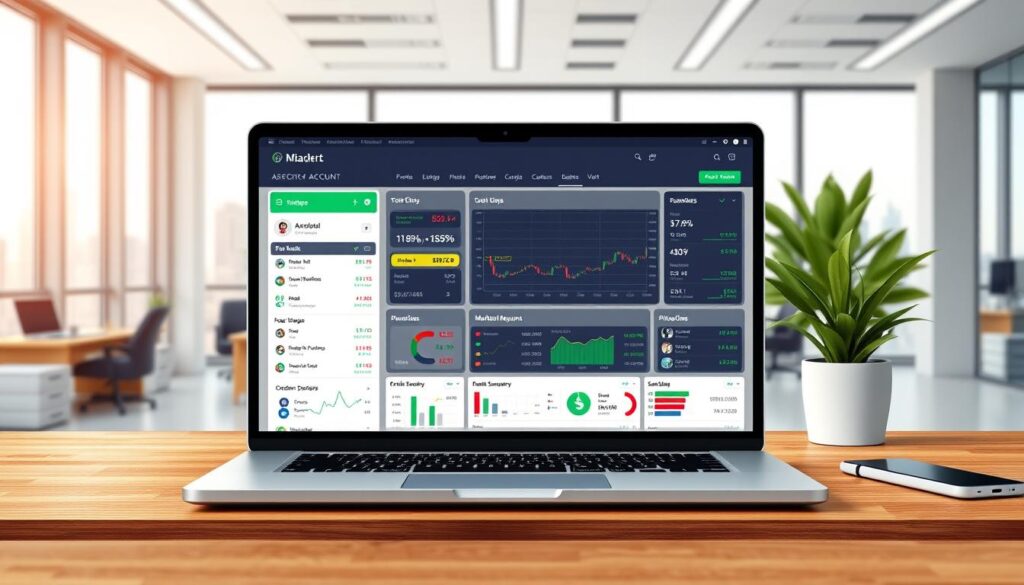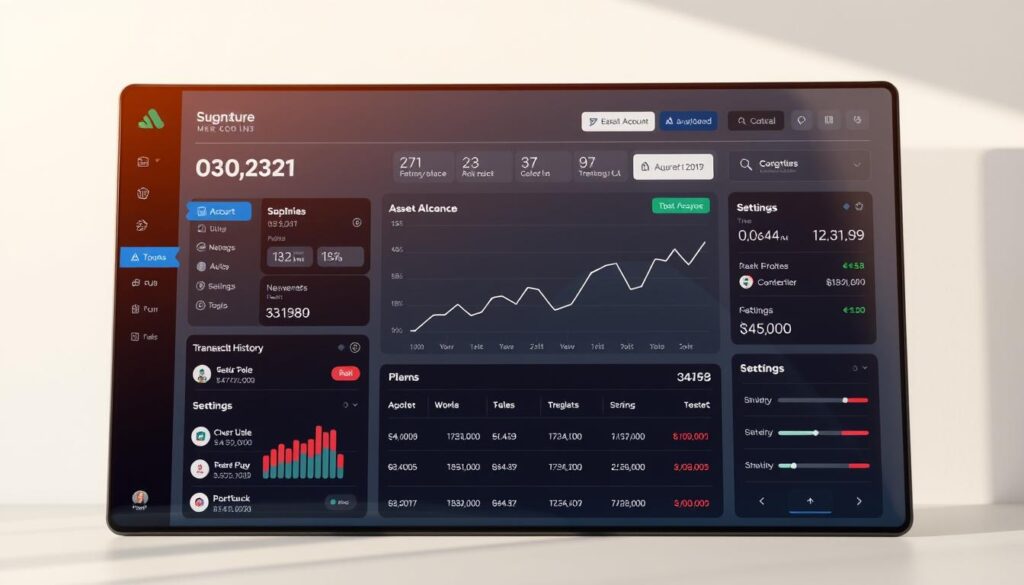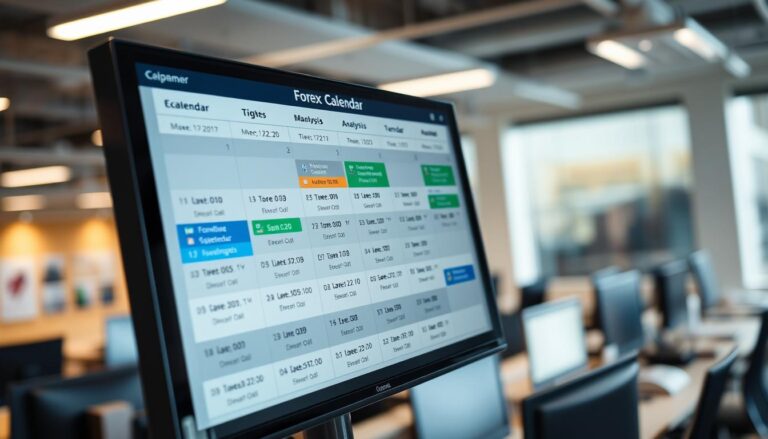Types of Trading Accounts Explained – Which One is Right for You?
Entering the financial markets requires more than just capital—it demands the right tools. A well-chosen platform acts as a gateway to buying and selling assets, managing funds, and tracking progress. These tools also help traders execute strategies efficiently, whether they’re new to investing or seasoned professionals.
Selecting the ideal option can feel overwhelming. With varying features, fee structures, and access to different asset classes, even experienced investors may struggle to navigate the choices. The decision impacts everything from portfolio growth to risk management, making it critical to understand what each option offers.
For beginners, starting with demo platforms provides hands-on practice without financial risk. Others might prioritize low fees or advanced analytics tools. Each choice shapes how traders interact with stocks, currencies, or commodities, influencing long-term success.
This guide breaks down key considerations, from basic setups to specialized structures. By matching personal goals with platform features, readers can confidently choose a solution tailored to their needs. The right selection unlocks opportunities while aligning with individual risk tolerance and investment timelines.
Overview of Trading Account Options
Financial platforms act as bridges between investors and global markets. These tools enable users to execute strategies, manage funds, and analyze price movements. Understanding their role helps traders align choices with personal goals and risk appetites.
Defining Their Purpose in Modern Investing
Specialized platforms serve distinct functions. Some prioritize educational resources, while others focus on rapid trade execution. They streamline access to stocks, currencies, and commodities, acting as gatekeepers for market participation.
Demo Platforms Versus Real-Money Environments
Practice platforms simulate market conditions using virtual currency. Users test strategies without risking capital, making them ideal for mastering order types or technical indicators. However, artificial liquidity may distort price fills during volatile periods.
Live environments introduce psychological pressures. The fear of losses or excitement about gains often impacts decision-making. Real-market execution ensures accurate pricing but requires emotional discipline many beginners lack.
Understanding the “types of trading account”

Selecting the right financial setup shapes how traders interact with markets. Three popular structures cater to distinct strategies, cost preferences, and ethical considerations. Each offers unique advantages for managing positions across asset classes.
Exploring Classic, Zero, and Swap-Free Structures
The Classic structure simplifies forex participation with all costs embedded in spreads. This approach removes hidden fees, making it ideal for those prioritizing straightforward pricing. Newcomers often favor its predictable expense model.
Zero accounts appeal to frequent traders through raw spreads and low per-trade commissions. Scalpers benefit from tight pricing, though platform fees apply. This model suits high-volume strategies demanding minimal slippage.
Swap-Free options accommodate religious principles prohibiting interest charges. Over 50 instruments remain accessible without overnight fees, blending ethical compliance with market access. Traders avoid compromising beliefs while maintaining portfolio diversity.
Core Advantages for Strategic Alignment
Classic users gain simplicity, while Zero enthusiasts optimize cost efficiency. Swap-Free solutions address specific cultural needs without limiting opportunities. Understanding these key features helps match choices to individual goals.
Active traders might prioritize Zero’s tight spreads, whereas long-term investors could prefer Classic’s stability. Religious considerations often make Swap-Free the only viable path. Evaluating personal requirements ensures alignment with account benefits.
Factors to Consider When Choosing a Trading Account

Navigating the selection process for financial platforms requires balancing personal preferences with practical realities. Every decision affects how traders interact with markets, manage exposure, and achieve long-term objectives.
Assessing Risk Tolerance and Trading Experience
Understanding one’s comfort with volatility determines suitable leverage levels and position sizes. Novices often benefit from lower exposure limits and educational tools, while seasoned professionals might prioritize advanced analytics. Emotional discipline plays a key role—those uneasy with rapid price swings may prefer conservative strategies.
Evaluating Account Size, Leverage, and Costs
Smaller balances often work best with platforms offering micro-lots or fractional shares. High leverage amplifies both gains and losses, making it risky for inexperienced users. Fee structures matter: compare spreads, overnight charges, and inactivity penalties. Hidden costs, like currency conversion fees, can quietly erode profits over time.
Aligning these factors with individual goals ensures better outcomes. A day trader’s needs differ vastly from a long-term investor’s requirements. Regular reviews help adapt choices as skills evolve or market conditions shift.
The Function of Trading and Brokerage Accounts

Centralized platforms have revolutionized how businesses handle financial operations and investments. These tools provide a structured approach to managing funds, executing transactions, and maintaining regulatory compliance. By separating business and personal finances, they ensure clarity in record-keeping—a critical factor for audits and growth strategies.
Managing Funds and Tracking Performance
Brokerage accounts streamline complex tasks like dividend collection and automated cash transfers between investments. Real-time portfolio valuations and historical return analysis help users gauge strategy effectiveness. For businesses, this means identifying underperforming assets or reallocating resources swiftly.
Modern platforms integrate advanced reporting tools that generate tax documents and performance summaries. These features simplify compliance while offering insights into risk metrics and asset allocation patterns. Traders can spot trends, adjust positions, and align decisions with long-term objectives.
Automated interest calculations and seamless transfers between investment vehicles reduce manual oversight. This efficiency allows companies to focus on strategic growth rather than administrative tasks. Whether handling stocks or commodities, these systems ensure every transaction supports broader financial goals.
By combining execution capabilities with analytical depth, trading accounts empower informed decision-making. They turn raw data into actionable insights, helping businesses optimize returns while managing exposure. The right setup doesn’t just facilitate transactions—it transforms how organizations interact with markets.
Insights into Business Trading Accounts

Organizations require tailored financial solutions to manage growth and market participation effectively. Business trading accounts provide specialized structures for companies to handle transactions, optimize investment returns, and align strategies with corporate goals. These platforms cater to unique needs like liability protection and institutional-grade asset access.
Understanding Corporate and Business Account Structures
Legal entities like LLCs and corporations use these accounts to separate assets from personal finances. This shields owners from individual liability while enabling access to advanced trading tools. Partnerships and sole proprietorships also benefit from flexible fee models and priority customer support.
Corporate structures streamline compliance with regulatory standards. They simplify audits through detailed performance records and segregated funds. Institutional counterparties often prioritize businesses using formalized setups, enhancing credibility in complex transactions.
Tax Benefits and Financial Management Advantages
Businesses deduct expenses like research tools, software, and professional advisory fees—costs individual traders typically can’t claim. These tax benefits improve net profitability while supporting data-driven investment objectives.
Strategic succession planning becomes seamless with corporate accounts. Ownership transitions don’t disrupt active positions, ensuring continuity. Enhanced access to alternative assets and private equity funds further diversifies portfolios beyond standard retail offerings.
By centralizing financial activities, companies gain clearer insights into cash flow patterns. Automated reporting tools track returns across multiple markets, helping leaders make informed adjustments. This integration transforms how businesses scale their market presence while managing risks.
Comparing Individual and Business Trading Accounts

Asset protection and tax efficiency vary dramatically between personal and corporate setups. This choice influences everything from legal exposure to portfolio growth potential. Understanding these distinctions helps investors align their strategies with long-term objectives.
Key Differences in Account Features
Liability protection stands as a critical divider. Corporate structures shield personal assets from market losses, while individual setups expose savings or property to risks. This makes business options safer for high-stakes strategies.
Tax treatment also diverges. Personal investments face capital gains rules based on income brackets. Businesses, however, deduct expenses like research tools or advisory fees, lowering taxable profits. Some even restructure gains as lower-taxed corporate income.
Access to specialized services differs too. Institutional pricing and alternative assets often require business verification. Individuals might face higher fees or limited product options due to accreditation rules.
Setup complexity increases with corporate accounts. Documentation like partnership agreements or incorporation papers adds steps. Ongoing compliance—think audits or ownership transfers—demands more effort than personal platforms. Yet, these hurdles enable succession planning and credibility with institutional partners.
Choosing between these paths depends on risk appetite and growth ambitions. Those prioritizing flexibility and protection lean toward business solutions. Investors focused on simplicity may prefer individual setups despite the trade-offs.
Navigating Fees, Rates, and Regulatory Requirements

Transparent cost analysis separates successful traders from those surprised by hidden expenses. Every platform structures charges differently—some bury fees in spreads, while others use flat commissions. Understanding these models helps maintain profitability across strategies.
Understanding Spreads, Commissions, and Hidden Costs
Spreads represent the difference between buy/sell prices—a primary cost for forex traders. Platforms like Fusion eliminate minimum balance rules, appealing to small-scale users. However, high-frequency strategies demand scrutiny of per-trade commissions that compound over hundreds of transactions.
Common overlooked charges include:
- Inactivity penalties after 12 dormant months
- Currency conversion markups
- Premium data feed subscriptions
Vanguard’s $25 annual service fee demonstrates how brokerage costs vary. Clients holding under $5 million in assets face additional charges per legacy mutual fund—a detail easily missed during account selection.
Regulatory Considerations for UK Traders
The FCA mandates strict safeguards for retail clients. Platforms must segregate cash from corporate funds and participate in compensation schemes covering £85,000 per eligible claim. Business accounts often face extra documentation demands compared to personal setups.
Brokerage services may subject corporate users to enhanced reporting for tax audits. Verify if your provider adheres to MiFID II standards, which standardize fee disclosures across EU/UK markets. These requirements ensure transparency but increase administrative workloads for active firms.
Regularly review fee schedules as rates fluctuate with market conditions. What appears cost-effective today might become burdensome after scaling trade volumes or adjusting strategies.
Final Insights on Choosing Your Ideal Trading Account
Making informed decisions in financial markets starts with aligning tools to individual goals. Carefully investing time to compare platforms ensures strategies match risk tolerance and capital availability. Prioritize solutions offering educational resources for beginners or robust analytics for seasoned traders.
Liquidity and execution speed prove critical for frequent positions. Accounts offering raw spreads often suit high-volume strategies, while stable pricing benefits long-term holders. Always verify how platforms handle slippage during volatile periods—this impacts returns more than many realize.
Start conservatively with smaller allocations to test features without overexposure. Regularly review performance metrics and adjust settings as skills evolve. Advanced trading tools should simplify analysis, not complicate decision-making processes.
Ultimately, the right choice balances costs, asset access, and usability. Whether focusing on forex or equities, let exploration of options guide selections. Aligning these elements transforms how traders interact with markets—turning objectives into achievable outcomes.






